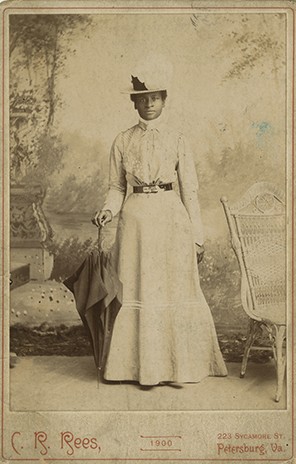
Mary Elizabeth Bowser was born in the time period of 1839, in Richmond, Virginia. She was born as a slave for the Van Lew family. Her slave owner, John Van Lew, was a wealthy hardware merchant, he died in 1843, and Mary and other slaves were freed by Elizabeth and Elizabeth’s mother.
Even though Mary was freed, she still continued to work for the family as a free, paid servant. Elizabeth Van Lew sent Mary to a Black Quaker school in Philadelphia. Mary had to return back to Richmond when the Civil War tension began in 1860.
Before the war started Mary was married to a free Black man, William (Wilson) Bowser, they were married four days after the Civil War began, they never had children. Their wedding ceremony was unusual because they were married in a church that only the white and wealthy people attended.
At the beginning of the Civil War on April 12, 1861, Elizabeth Van Lew asked Mary to be a spy to help the Union. Elizabeth couldn’t take on the task by herself because she was supposed to be an important member of Richmond, but only because of her father’s wealth and status.
Mary agreed to help Elizabeth out and started to work for the Confederate White House. She worked there until right before the end of the Civil War.
When Mary started to work for President Jefferson Davis and his wife she had to change some things. First, she had to change her name to “Ellen Bond” just so no one would know her actual identity. Then, she had to remind herself that she was going to be a slave again.
She was used to be treated with proper respect and like the intellectual that she actually was. But when she went to the Confederate White House she had to pretend to be unintelligent and act like she didn’t understand what they were talking about so she could get information on the Confederates and their plans to attack the Union.
Ellen Bond (Mary Bowser) was considered “dim-witted, also slightly crazy, but an able servant” to the president and his wife.
Mary couldn’t get the information that she needed if she only did her job. While she cleared the dishes or cleaned the kitchen she had to listen in on the conversations about troop strategies and movements.
Also, when she cleaned up around the Confederate White House she would go into President Jefferson Davis’ office and look through the letters and other paperwork on his desk. Mary had a very good memory so she would report what they said or what she read, word for word to either Elizabeth or a new messenger, Thomas McNiven.
Thomas McNiven was a baker that would come to the Confederate White House often to sell baked goods. Every time he would come by Mary would go out to the wagon and exchange the information while he gave her the bread. Thomas would go and tell Elizabeth the information that Mary told him.
Mary was different from most of the other slaves at that time because she could read, understand the conversations and write. She was an important asset to the win of the Union.
The president noticed that there was a leak in the Confederate White House, but he didn’t suspect Mary until the very end of the war. When she knew that Jefferson suspected she was the leak, she fled the White House January 1865. As one last attempt to help the Union, she tried to burn down the Confederate Capitol but was unsuccessful.
After the war, there was no record of the life or death of Mary or William Bowser. The federal government burned all of the records of southern spies. The files included Mary Bowser, Thomas McNiven, and Elizabeth Van Lew, so that is why some of the details are missing in all of their histories.
In 1995, Mary was honored by the U.S. Government for her efforts in spying. She was inducted in the “U.S. Army Military Intelligence Corps Hall of Fame”.
This was said at the ceremony: “Ms. Bowser succeeded in a highly dangerous mission to the great benefit of the Union effort. She was one of the highest placed and most productive espionage agents of the Civil War.
Ms. Bowser’s information greatly enhanced the Union’s conduct of the war. Jefferson Davis never discovered the leak in his household staff, although he knew the Union somehow kept discovering Confederate plans.





Nearly everything in this article is inaccurate. For example, the photograph you include is not of the woman you are writing about. It is a woman born decades later. See my June 2019 articles in TIME and the Los Angeles Review of Books for more accurate information. And please cite your sources, so readers know whether your work is based on accurate research or not.
Ms. Leveen,
You are correct, I did intend to include a notation about the photo and I have amended the caption. Sister Tarpley writes an opinion column.